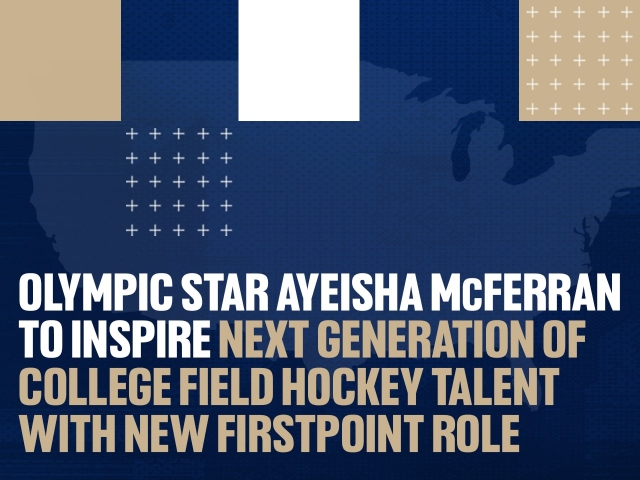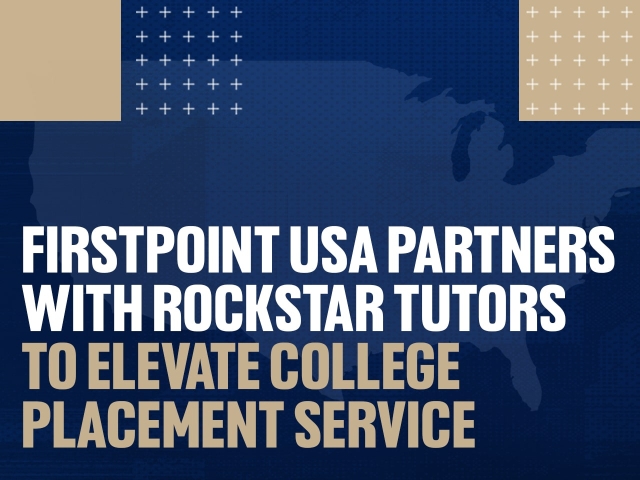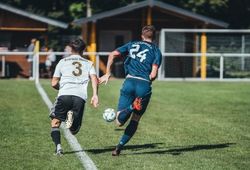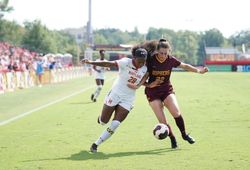Written by Beth James, former Academic Counsellor at the University of Nebraska's Athletic Department and now Head of Recruitment at FirstPoint USA.
For international student-athletes setting their sights on the American college sports scene, the options can seem vast. While NCAA Division 1 (DI) often grabs the spotlight, the US offers a wealth of opportunities across various divisions within the National Collegiate Athletic Association (NCAA), the National Association of Intercollegiate Athletics (NAIA), and Junior Colleges (JuCo).
This guide will explore the differences between these governing bodies and their divisions, highlighting the varying levels of athletic and academic requirements, and the unique advantages each can offer. We aim to show you that success isn't limited to DI and that there's a place for every aspiring student-athlete on your respective college sport and academic journey.
The NCAA: A Divisional Breakdown
The NCAA is the primary governing body for college sports in the US, organized into three divisions:
- Division I (D1): Known for its high-profile programs and intense competition.
- Division II (D2): Offers a strong balance of competitive athletics and academic pursuits.
- Division III (D3): Emphasizes a well-rounded college experience where athletics are part of a broader educational focus.
Here's a snapshot of the NCAA landscape by student-athlete numbers:
- Division 1: 352 schools, approximately 190,000 student-athletes
- Division 2: 313 schools, over 122,000 student-athletes
- Division 3: 434 schools, over 200,000 student-athletes
And here are the statistics on athletic scholarship funding for DI and DII:
- Approximately 57% of D1 athletes receive some form of athletic aid.
- Around 60% of D2 athletes receive athletic aid.
Keeping Your Options Open
At the outset of your journey, it’s easy to see why most aspiring athletes will be aiming to secure a place at a DI institution. The big college brands, the allure of the top campuses, the huge crowds and those athletes who have gone before you are all part of the allure. However, there are some incredible opportunities at each division which might be more suited to you and enhance your enjoyment of the US experience. Indeed, some of the best athletes in the country have followed a different route, whether starting out at a junior college or making their name at a DII school.
Pursuing a DI degree, combining athletics and academics, is also hugely demanding and while the rewards are there to be had, aspiring athletes should also consider some of the following challenges:
The DI Experience:
- Training and practice consume a significant portion of your time.
- Balancing a part-time job, internships, or traditional vacations can be challenging.
- Your daily schedule is often structured around your sport.
- Some athletes take their most demanding courses during the summer to manage their academic workload.
- The intense focus on athletics can sometimes create a sense of separation from the broader student body.
- Success at this level requires an unwavering commitment to your sport.
NCAA Division II: Finding Balance
If you seek a more balanced college experience, Division II offers a compelling alternative. DII athletics still require significant training and practice within a highly competitive sporting environment, but the demands are less intense than in DI.
Key features of D2:
- A strong commitment to athletics, without the year-round intensity of DI.
- A greater likelihood of receiving athletic aid, with approximately 60% of DII athletes receiving some form of assistance.
- A broad choice of schools with options across the country.
NCAA Division III: A Well-Rounded Approach
Division III differs from DI and DII in several ways. While DI and DII athletes must meet NCAA-set eligibility requirements, DIII schools establish their own standards.
DIII Highlights:
- Athletes receive non-athletic financial aid, such as grants and need-based scholarships.
- DIII programs prioritize academics, with approximately 87% of DIII athletes graduating within four years.
- While training and practice are still integral, they are less demanding than in DI or DII.
- D3 fosters a more integrated college experience, promoting connections with the broader student community.
A DIII program can be an excellent option for those who want to focus on both their academic and athletic pursuits within a well-rounded college environment.
Bernie White, College Placement Consultant for FirstPoint USA, secured a place at DIII Amherst College in Massachusetts and explains the reasons he opted to go there:
“Division III schools tend to be a lot more academically focused. When I was going through the recruitment process, I had a few options in each division, but I really wanted to prioritize academics. Amherst allowed me still be part of a top soccer program who’d enjoyed a lot of success, but also to get a really top-level education, so it seemed like a really great fit.”
“I come from a very academically driven family, so it was a big thing for me to go somewhere that would give me a really good education first. Some people might think that you’re not getting the same level of athletic experience at a DIII school, but that wasn’t the case at Amherst. The program was run like a top DI program, the standards and expectations were high, and the coaching was top notch, so I feel like I really got the best of both worlds."
The NAIA: A Comparison with DII
The National Association of Intercollegiate Athletics (NAIA) has a long history, indeed predating the NCAA. With around 250 primarily private, smaller institutions, the NAIA provides opportunities for over 60,000 student-athletes across the States.
The NAIA Value Proposition:
- Often compared to NCAA DII in terms of balancing life and sports, and the level of competition.
- Awards significant athletic scholarships, totaling nearly $1.3 billion annually.
- Increased recruiting efforts are attracting more talented athletes, elevating competition levels.
- Top-tier NAIA programs can rival NCAA DII programs in competitiveness.
The NAIA is a strong option for students seeking a solid balance between academics and competitive athletics.
Ross Alexander, now Assistant Head Coach at DI Arizona State University's women's soccer program, was one player who came through the NAIA route, moving from a pro club academy in Scotland to Grand View University in Iowa. He enjoyed a successful four-year career there, reaching the NAIA national tournament, and laying the foundations to build a top-level college coaching career.
“I loved every single minute of my time at Grand View University. We had a real international team with players from many different countries, and it was a great learning environment for me. I played alongside a Brazilian midfielder who was probably the most talented player I’d ever seen, as well as a 6’ 7” Norwegian centre half, so it was a real mix of cultures. The standard was great, we got through the finals of national tournaments, and I’ve got some amazing memories to look back on.”
“I would say don’t turn down any opportunities because you think ‘it’s not good enough for me’. You might not get the fancy label of a DI university, but you’ll get an incredible experience."
NJCAA: The Junior College Option
Junior Colleges (JuCos) are often overlooked in the college recruiting process, but they offer substantial academic and athletic value. Over 60,000 student-athletes participate in 28 sports at more than 500 NJCAA schools each year.
Why consider a JuCo?
- Cost-Effectiveness: Lower tuition and scholarship opportunities make JuCo an affordable starting point.
- Competitive Edge: Athletes often gain immediate playing time, honing their skills for transfer to four-year programs.
- Academic Flexibility: JuCos offer general education and developmental courses that readily transfer, aiding in maintaining academic eligibility.
- Enhanced Recruitment Prospects: Coaches often view JuCo athletes as more experienced and college-ready.
Kirsten Lawrence, Head of Talent Management for FirstPoint USA, highlights why Junior College should be a consideration for some athletes:
“Many of our athletes initially don’t understand the junior college system, but we’re always keen to make them aware of it as an option so people approach it with an open mind. The Junior College system in the States gives you an opportunity to complete your first and second year and transfer all those credits to a four-year institution to complete your degree.
“You walk away with an associate’s degree from a junior college so you do come out with a good qualification, and there are so many bonuses to the JuCo system, such as more game time in many cases, you often have lower costs to make it more affordable and it can be great stepping stone where you have a lot more support around you as you’re transitioning from high school to college. Junior college is not as well known internationally, but it can be of real value for those who want to keep their options open.”
Academic Requirements and Alternative Paths
Each division and governing body has its own academic eligibility requirements, which can be a significant factor for international student-athletes.
- NCAA: D1 has the most stringent academic standards, including minimum GPA in core courses and standardized test scores (SAT/ACT). D2 also has requirements, though they are generally less demanding than D1.
- NAIA: The NAIA has its own set of academic requirements, including GPA and test scores, which are often less stringent than NCAA DI.
- JuCo: Junior colleges typically have more flexible entry requirements, focusing on high school completion. This can provide an opportunity for athletes to improve their academic standing before transferring to a four-year institution.
For international student-athletes who may find the NCAA DI academic requirements challenging, NAIA, DII, and JuCo can offer more accessible pathways to combine sports and education. These options provide opportunities to compete at a high level while potentially having more time to focus on academics and adjust to the US educational system.
Making Your Decision: Beyond Athleticism
While athletic talent is a key factor, remember that the ideal college fit encompasses academics, social life, and overall environment. You might possess the athletic prowess for Division 1, but that doesn't guarantee it's the best fit for your academic, developmental or social aspirations. As you develop your target list of schools, conduct your research and speak to your Talent Management consultant, keep these three factors in mind.
Ultimately, the "best" division is the one that aligns with your own personal goals and aspirations, setting you up for a successful and fulfilling college experience and beyond. FirstPoint USA is here to help you navigate these options and find your perfect pathway.




